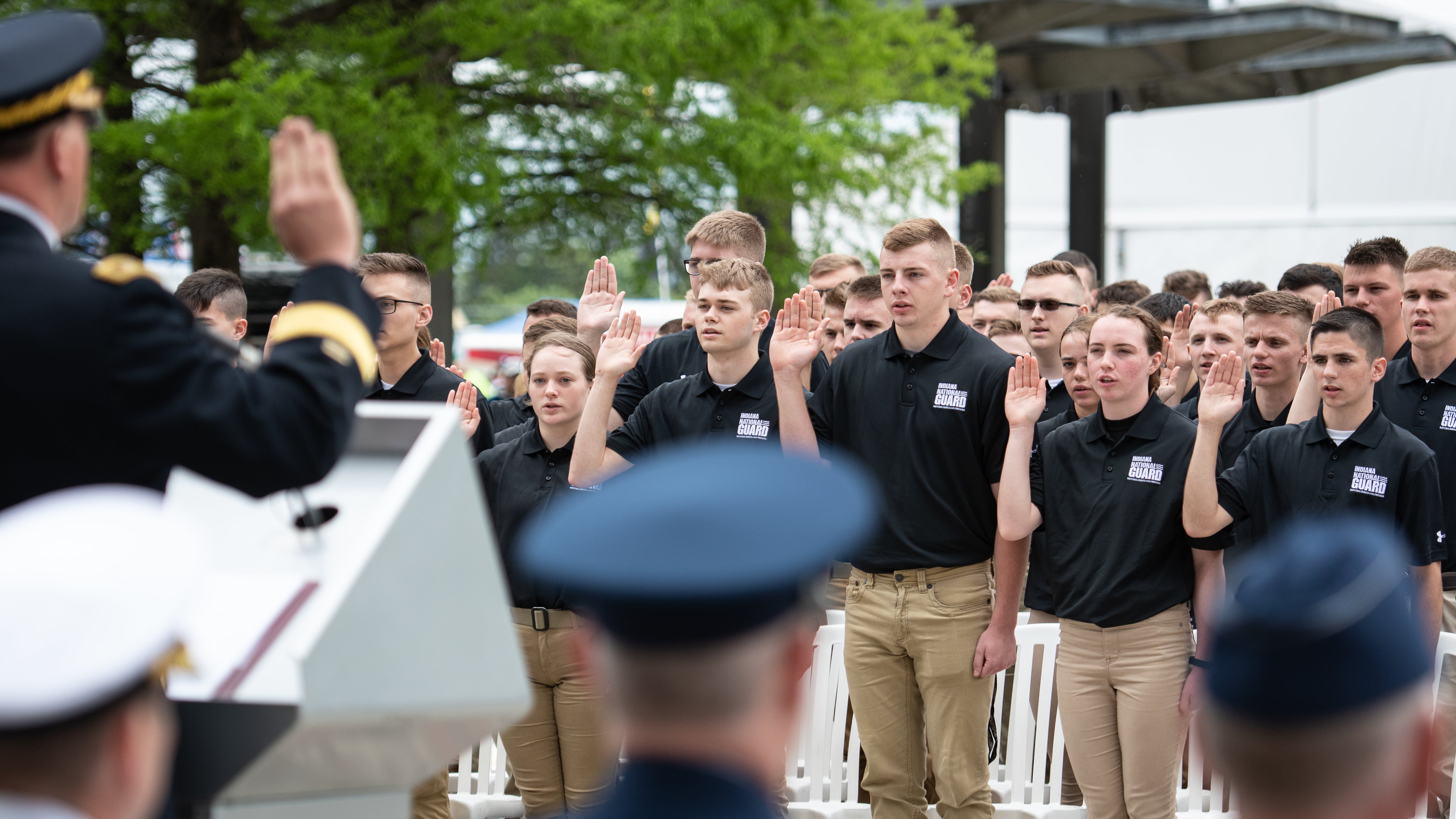The Army’s new Chicago-based marketing team is prepping for a new push harnessing big data analytics and the digital space to find potential soldiers.
The team has left its long-time headquarters near the Pentagon in an effort to get closer to private industry talent, including DDB Chicago — the firm that won a $4 billion contract to serve as the Army’s full-service ad agency until 2028.
Location will be paired with new approaches in the digital space, according to Brig. Gen. Alex Fink, a former Army reservist with private sector marketing experience who joined active-duty to lead the new enterprise. The team is already at initial operating capacity.
“Everything we do in the digital space will be integrated so that we can hyper target, so that we can deliver a message that we believe will resonate with someone that we’re interested in," Fink told reporters at the Pentagon on Thursday.
That message doesn’t yet involve a new slogan for the Army, but anything could change, team leaders say.
The target population for the new marketing effort is Generation Z, or those born in the mid-1990s and early 2000s. But will Gen Z be receptive to the new push, or will the Army’s use of big data alienate a group already inundated with guerrilla marketing campaigns, social media influencers and online advertisements?
“You always have to be respectful with an audience’s concerns with big data,” said Casey Wardynski, the Army’s assistant secretary for manpower and reserve affairs. “It won’t be information on kids; it will be information on how campaigns function. Information on media channels. Information about the website and how it’s performing."
A lot of that is already seen with companies like Google and Facebook, but the Army’s goal will be to use that big data approach to teach Gen Z about the service and then, “after they learn about us and find us interesting, well then we can learn about them,” Wardynski said.
“I think that’s kind of flipping it in terms of how some industry may work," he added. "So, we’re very respectful of people’s privacy.”
If someone browsing Army media channels has an interest in welding, for instance, the Army wants to ensure it shows them roles in the service that align with that interest and teach them the various educational and credentialing opportunities available through enlisting.
“They don’t want their time wasted on messages that don’t pertain to them,” Wardynski said. “When you bring them salient messages, they tend to click deeper.”
An easy-to-notice shift will be the coming changes to GoArmy.com. After the site’s architecture is upgraded, potential recruits will find that they’re able to quickly find roles and jobs that pertain to them with fewer clicks.
“We know that three clicks, four clicks, they’re gone," Wardynski said. "The industry spends a lot of time thinking about this: how do I quickly get them to something that marries up with relevance at this moment.”
“Envision a funnel," Fink added. "Those who show interest in the digital space, we’ll continue to message. Those who don’t, we’ll stop messaging. So we’ll be able to see who is not interested.”
DDB Chicago offers clients in-house capabilities ranging from research and analytics to creative services like design and production across all forms of media.
And the Army already knows a great deal about Gen Z. For instance, they want to be part of something larger than themselves, Fink said.
“Part of our whole campaign ... will be how do we draw a line between what you can do and what that brings to the team,” he added.

How serious is this new push to Chicago? The Army has essentially scrapped the old structure of its Army Marketing and Research Group for the first time in two decades. The new team will be known as Army Enterprise Marketing.
The Office of Personnel Management and outside marketing experts were tapped to help identify what civilians to hire, from artificial intelligence professionals to data scientists.
The new marketing team is also sourcing personnel who were logistics officers, infantrymen, and even an Army Ranger who will be the chief of staff.
The team will be comprised of about 50 people by next spring, about 70 percent of whom will be soldiers.
Before, the service mostly relied on outside experts, but the new push will emphasize using Army officers with their own marketing experience, like Fink, to lead the enterprise and translate the Army’s needs to civilian firms.
“I think this will be the first time a general officer has led a marketing effort,” Wardynski said. “So we got the exact right guy. And he’s now getting the other right folks to work on his team.”
Kyle Rempfer was an editor and reporter who has covered combat operations, criminal cases, foreign military assistance and training accidents. Before entering journalism, Kyle served in U.S. Air Force Special Tactics and deployed in 2014 to Paktika Province, Afghanistan, and Baghdad, Iraq.





